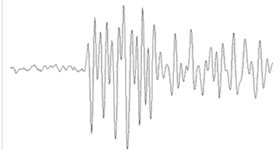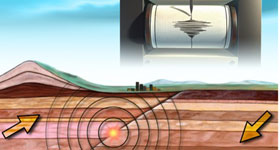| University of Colorado at Boulder | ||||||
 |
||||||
INDUCED SEISMICITYOne unintended consequence of wastewater injection is induced seismicity. While most earthquakes are naturally-occurring geologic phenomena, seismicity can be triggered by injection of fluids into the subsurface, increasing the pore pressure in the rock that effectively reduces the natural friction on a fault. In Colorado, examples include induced seismicity from enhanced oil recovery in the Rangely Colorado oil field in the 1960-70s, brine disposal to control Colorado River salinity near Paradox, Colorado in the 1990s, and liquid waste disposal at the Rocky Mountain Arsenal in the 1960s. More recent earthquakes have been attributed to wastewater disposal wells in Greeley, Colorado and various other states including Kansas, Ohio, Oklahoma, and Texas. Funding for the Induced Seismicity webpages has been provided by the National Science Foundation through the CU Collaboratory for Induced Seismicity
Last substantive additions to IS pages: 12/31/19 |
||||||






